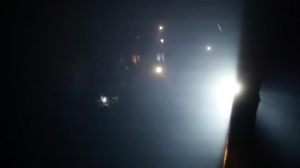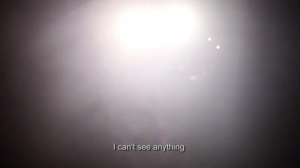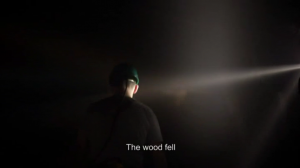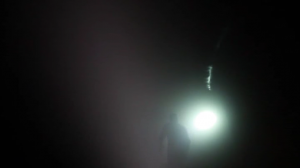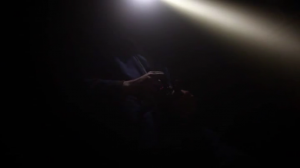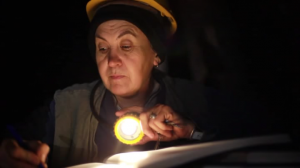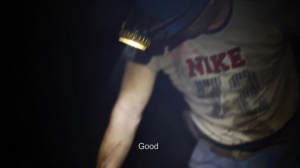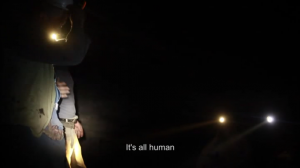Originally posted on June 13, 2016. — J.R.
It’s embarrassing for me to confess that I let over six weeks pass from the time that Oda Kaori sent me an email from Osaka with a link to her 68-minute film Aragane until I finally found time to watch it — during a day of rest in Lisbon, in between professional engagements. This has been an exceptionally busy spring for me in terms of writing, travel, and other commitments, but I suspect that another reason why it’s taken me so long was the fearful prospect of watching a documentary of that length about work in a coal mine in Sarajevo. I don’t know why this prospect discouraged me so much, but the fault is mine.
Kaori was one of the original dozen or so students to enroll in Béla Tarr’s Film.Factory when it started three years ago, whom I met during my first of my four two-week sessions there; she was also one of the students most affected by the films of Peter Thompson, whose email I quoted from in my article about Film.Factory, and whom I once lent a DVD of Maya Deren’s films at her request. I believe that Aragane was her thesis film; she has shown it at a few Japanese venues, including the Yamagata film festival, and she is hoping to find a distributor for it.
What’s astonishing to me about Aragane, now that I’ve seen it, is that it literally reinvents my idea of what cinema is and can be — and not only because it unfolds mostly in darkness (yet a darkness that is constantly shifting and changing, at every instant, in relation to the few pinpoints of light), but also because it has a exquisite formal and even abstract beauty that is complemented, complicated, and sometimes even contradicted throughout by a continuous human presence. I’m speaking now mainly of the film’s centerpiece — the 40-odd minutes that unfold underground — rather than the matching portions filmed in daylight at the beginning and end of the film, which are more conventional (although the snowfall at the end does offer a lovely spread of white to complement all of the preceding blackness).
It’s hard to think of very many other films that can’t be represented adequately by any single image or framegrab, and the only reason why I’ve included ten of these below is merely to suggest a small fraction of the variety of what it has to offer in terms of image and sound (the latter only faintly indicated by the subtitles for the dialogue). The only film I can think of that seems remotely comparable is Lucien Castaing-Taylor and Verena Paravel’s 2012 Leviathan, but Oda’s handling of human presence surpasses that film in so many ways that it seems worth mentioning the earlier film only in terms of contrast.
Quite apart from its excitement as a remarkable technical tour de force, the underground section of Aragane amazes me most of all by posing a sort of metaphysical conundrum: Is Oda Kaori discovering a new world, or is she creating one? Obviously she’s doing both, but the paradoxical rift between those two achievements is the thrilling space she’s discovered and created for me. [6/13/2016]

